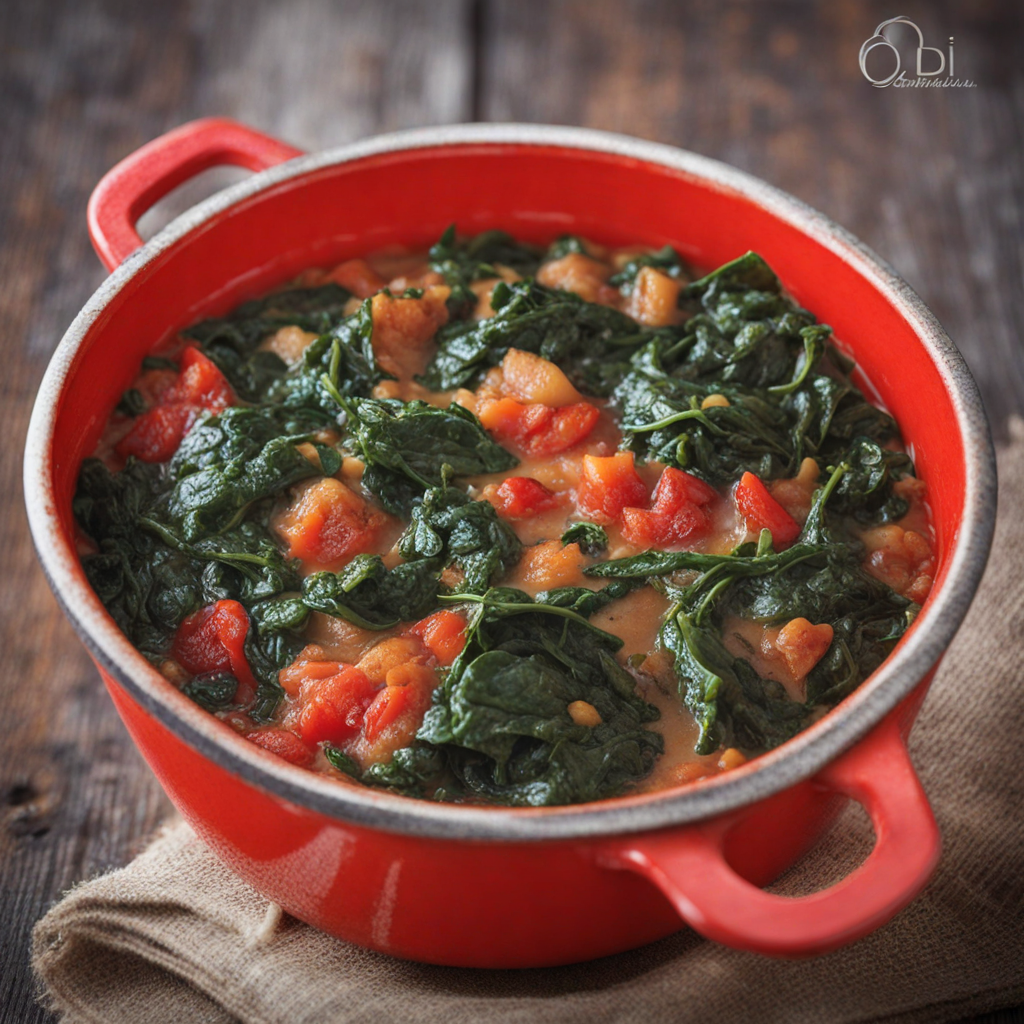Ombidi
Ombidi is a traditional Namibian dish that showcases the rich culinary heritage of the region. At its core, Ombidi is made from fermented grains, typically maize or millet, which are ground into a fine powder and then mixed with water to create a thick porridge-like consistency. The fermentation process not only enhances the flavor but also adds a delightful tanginess to the dish, making it a unique experience for the palate. The texture is smooth yet hearty, providing a satisfying base for various accompaniments. To elevate the flavors of Ombidi, it is often served with a variety of side dishes that include stews made from local meats such as game or chicken, as well as vegetables like spinach or pumpkin. The combination of the tangy porridge with savory stews creates a delightful contrast that is both comforting and invigorating. Additionally, some variations incorporate spices and herbs that infuse the dish with aromatic notes, further enhancing its appeal. Ombidi is not just a meal; it's a cultural experience that reflects the communal spirit of Namibian dining. It is often enjoyed during gatherings and celebrations, where families and friends come together to share this hearty dish. The act of eating Ombidi is a communal affair, symbolizing unity and togetherness, making it a memorable experience for anyone looking to explore the authentic flavors of Namibia.
How It Became This Dish
The Rich History of Ombidi: A Culinary Gem from Namibia Ombidi, a traditional dish from Namibia, embodies the essence of the country’s diverse cultures and its deep-rooted connection to the land. As an essential part of the culinary heritage of the Ovambo people, Ombidi is more than just a meal; it is a symbol of community, tradition, and resilience. This narrative explores the origins, cultural significance, and evolution of Ombidi, highlighting its importance in Namibian society. #### Origins of Ombidi The roots of Ombidi trace back to the Ovambo people, one of the largest ethnic groups in Namibia, predominantly residing in the north of the country. The term "Ombidi" translates to “porridge” in the Ovambo language, and the dish is primarily made from maize flour or millet, staple grains that have sustained communities in this arid landscape for centuries. Historically, the Ovambo people practiced subsistence farming, cultivating crops like millet, maize, and sorghum. These grains were not just sources of sustenance; they were integral to the cultural fabric of their society. The process of preparing Ombidi involves mixing the flour with water and cooking it until it reaches a thick, porridge-like consistency. Traditionally, this dish is served with a variety of accompaniments, such as meat stews, vegetables, or dried fish, reflecting the local resources and agricultural practices. #### Cultural Significance of Ombidi Ombidi serves as a culinary centerpiece during communal gatherings, celebrations, and rituals among the Ovambo people. It is often prepared during significant life events, such as weddings, births, and funerals, symbolizing unity and hospitality. Sharing Ombidi is a way of forging bonds between families and communities, reinforcing social ties and cultural identity. In Ovambo culture, food is deeply intertwined with spirituality and tradition. The preparation of Ombidi is often accompanied by traditional songs, prayers, and storytelling, making it a holistic experience that transcends mere sustenance. The act of cooking is a ritualistic practice, allowing elders to pass down knowledge and customs to the younger generation, ensuring the continuity of cultural heritage. Moreover, Ombidi is celebrated for its nutritional value, particularly in a region where food security can be a concern. The dish is rich in carbohydrates and can be fortified with proteins and vitamins through the addition of legumes, animal products, or vegetables. This versatility allows Ombidi to adapt to various dietary needs and preferences, making it a quintessential component of Namibian cuisine. #### Development Over Time As Namibia navigated through historical changes, including colonial rule and subsequent independence in 1990, the significance of Ombidi has evolved but remained steadfast. The impact of colonization introduced new agricultural practices and food items, leading to a fusion of culinary traditions. While traditional methods of preparing Ombidi remain popular, modern influences have introduced variations, including the use of wheat flour or instant porridge mixes, reflecting changing lifestyles and globalization. In contemporary Namibia, Ombidi is increasingly recognized beyond its traditional roots. It has found its way into urban settings, where it is served in restaurants and at social events. This transition has sparked a renewed interest in traditional Namibian cuisine, prompting chefs and food enthusiasts to explore and celebrate local ingredients and dishes. The growth of tourism in Namibia has also played a role in the popularization of Ombidi. As visitors seek authentic culinary experiences, Ombidi has become a point of interest, allowing travelers to engage with local culture through food. This has led to an increased appreciation of the dish, not only as a staple but also as a vehicle for storytelling and cultural exchange. #### The Future of Ombidi Looking ahead, Ombidi stands at the crossroads of tradition and modernity. The challenge lies in preserving its cultural significance while embracing the changing dynamics of society. Initiatives aimed at promoting traditional Namibian cuisine are emerging, encouraging young chefs to innovate while honoring their heritage. This ensures that Ombidi remains relevant in a fast-paced world, where the essence of tradition can sometimes be overshadowed by modern culinary trends. Furthermore, the resurgence of interest in local and sustainable food practices presents an opportunity for Ombidi to reclaim its place as a symbol of local identity. As concerns over food security and environmental sustainability grow, the importance of traditional dishes like Ombidi, which utilize locally sourced ingredients and time-honored cooking methods, is being recognized. This not only contributes to the preservation of local cultures but also supports the agricultural practices that sustain communities. #### Conclusion Ombidi is much more than just a dish; it is a narrative woven into the fabric of Namibian identity. Its origins among the Ovambo people, cultural significance, and evolution over time reflect a rich history that continues to thrive in the modern world. As Namibia embraces its diverse culinary heritage, Ombidi stands as a testament to the power of food in fostering community, preserving tradition, and celebrating the resilience of a people. Whether enjoyed in a family setting or shared with tourists, Ombidi remains a flavorful reminder of Namibia's rich past and its promising future.
You may like
Discover local flavors from Namibia







